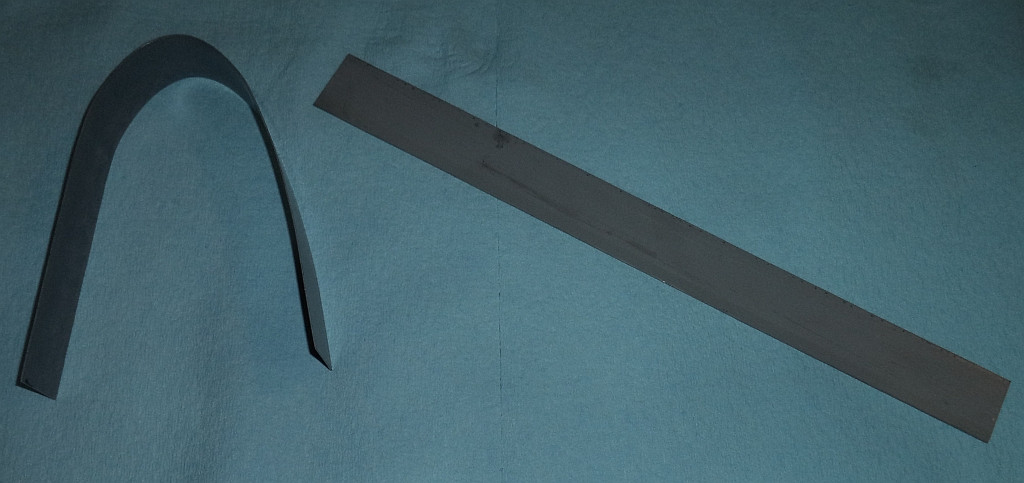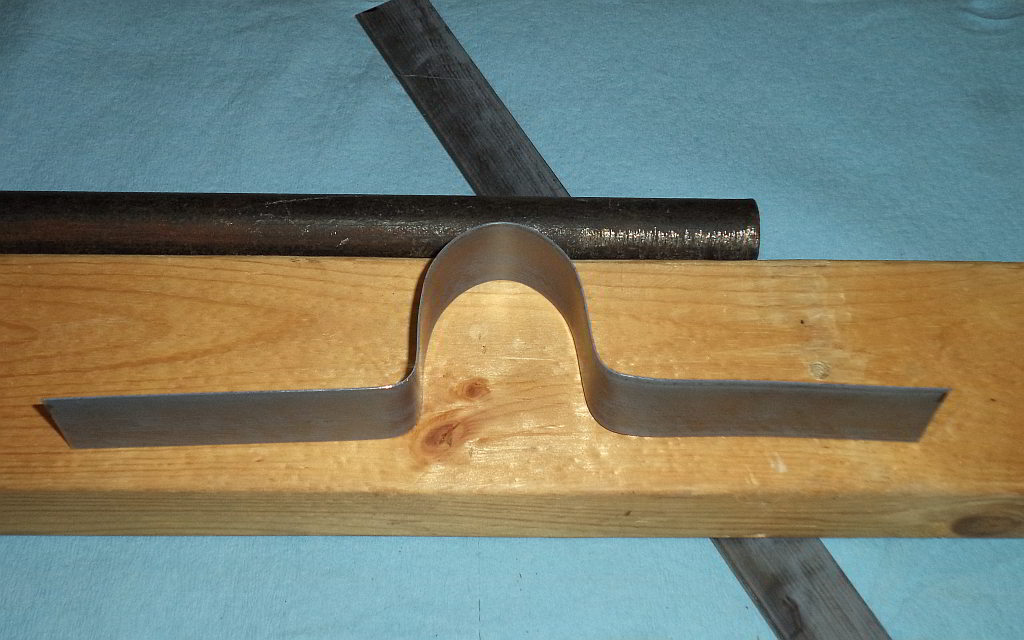The metal below was a banding strap in its former life. It is magnetic but slightly rusted at spots, so probably galvanized steel?

On the left you can see that I have started to shape the metal. However, this is not going as easily as I had hoped.
How can I shape the metal (using hand tools) to more closely resemble the bracket below?

Specifically, I need help forming the loop. I believe I can handle the rest.
BTW, this will be for holding tools to my garage wall, so I hope the question is appropriate here!
Edit:// Also wanted to say that the end result does not need to be so refined as the example I provided. I will be satisfied with something resembling a capital Omega.
Edit #2:// I have been shaping this over a pipe to get the shape on the left. Should I try using a smaller pipe to bend over? I thought I should use something larger, but now I am thinking probably not...

